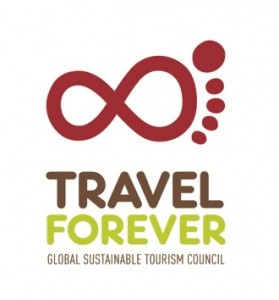Criteria to Describe the Minimum Standards That a Destination Must Reach To Attain Social, Cultural, and Environmental Sustainability
 Washington, D.C. – The early adopters of the Global Sustainable Tourism Council’s (GSTC) new Criteria for Destinations were announced today: They are Fjord Norway; Teton County, Wyoming; Mt. Huangshan, China; and St. Kitts & Nevis. This pioneering group of destinations will be the first to test and provide feedback on the Destination Criteria, which complement the GSTC’s existing Criteria for Hotels and Tour Operators.
Washington, D.C. – The early adopters of the Global Sustainable Tourism Council’s (GSTC) new Criteria for Destinations were announced today: They are Fjord Norway; Teton County, Wyoming; Mt. Huangshan, China; and St. Kitts & Nevis. This pioneering group of destinations will be the first to test and provide feedback on the Destination Criteria, which complement the GSTC’s existing Criteria for Hotels and Tour Operators.
The GSTC Criteria for Destinations describe the minimum standards that a destination must reach in order to move toward social, cultural, and environmental sustainability—maintaining the cultural and natural attractions that tourists come to see, while benefitting the local population.
“After many months of hard work developing these criteria, we are excited to see them implemented,” said Erika Harms, Executive Director of the GSTC. “This will be a real-world test, incorporating the voices of multiple stakeholders: local communities, government agencies, NGOs, and the tourism industry itself.”
The four destinations involved in this pilot program reflect a variety of landscapes, ranging from tropical islands to a region not far from the Arctic Circle. They were chosen for their positive impact on the environment, their economic and social benefits to communities, and their education of visitors and residents, among other criteria. Some are already pioneers in sustainable tourism; others are just beginning to set out on the path toward sustainability.
Wyoming’s Teton County takes pride in a long history of sustainability, dating back to the creation of the world’s first national park, Yellowstone, in 1872; forty years later, local outcry at the elk starving near the town of Jackson led to the creation of the National Elk Refuge, and less than 20 years after that, Grand Teton National Park was added to the county's roster of natural splendors; the Teton and Yellowstone area comprises the largest intact ecosystem in the continental U.S.
Says Jackson Hole Chamber of Commerce Executive Director Tim O’Donoghue, “As stewards of one of the most beautiful places on Earth, our community has made a strong commitment toward sustainability, with significant results. Our participation in the GSTC Early Adopter Program gives us the tools to achieve even more.”
Likewise, Norway’s Fjord region, along the country’s southwest coast, has been attracting travelers since the mid-19th century. In 2006, two of its fjords were named among the world’s best-cared-for UNESCO World Heritage Sites, and the region has published a “white book” to help other destinations develop sustainably. But they’re eager to do even more explains Fjord Norway’s CEO, Kristian B. Jorgensen, “Being part of the GSTC’s Early Adopter program is a very concrete way of helping us find the balance between preserving our spectacular landscape and growing as an attractive, nature-based travel destination.”
In China, Mt. Huangshan—known for its spindly granite peaks and the painterly pine trees that grow up through their cracks—sees more than 2.5 million visitors every year. The area’s administrators have already made efforts to reduce the impact of these sightseers by promoting alternative footpaths, encouraging winter visits, and closing the most frequented “hot spots” on a rotating basis.
The twin-island nation of St. Kitts & Nevis is relatively new to tourism, certainly when compared to some of its Caribbean neighbors. However, the destination has seen exponential growth in cruise visitors over the last few years and the government is eager to make sure that this development happens sustainably and with the preservation of the local culture and environment in mind.
In the coming months, a sustainable tourism consultant will visit each of these early-adopter destinations to see the criteria implemented, and to provide valuable feedback as the GSTC finalizes the Destination criteria.
The GSTC is collecting comments from the public on the criteria; input and suggestions can be made online via Destinations Criteria.
Destinations interested in becoming an early adopter of new Criteria for Destinations are encouraged to contact the GSTC as soon as possible at [email protected].
Once the GSTC publishes its revised criteria, these early-adopter destinations will have the opportunity to apply for formal recognition that they operate in accordance with these universal principles of sustainable tourism.
